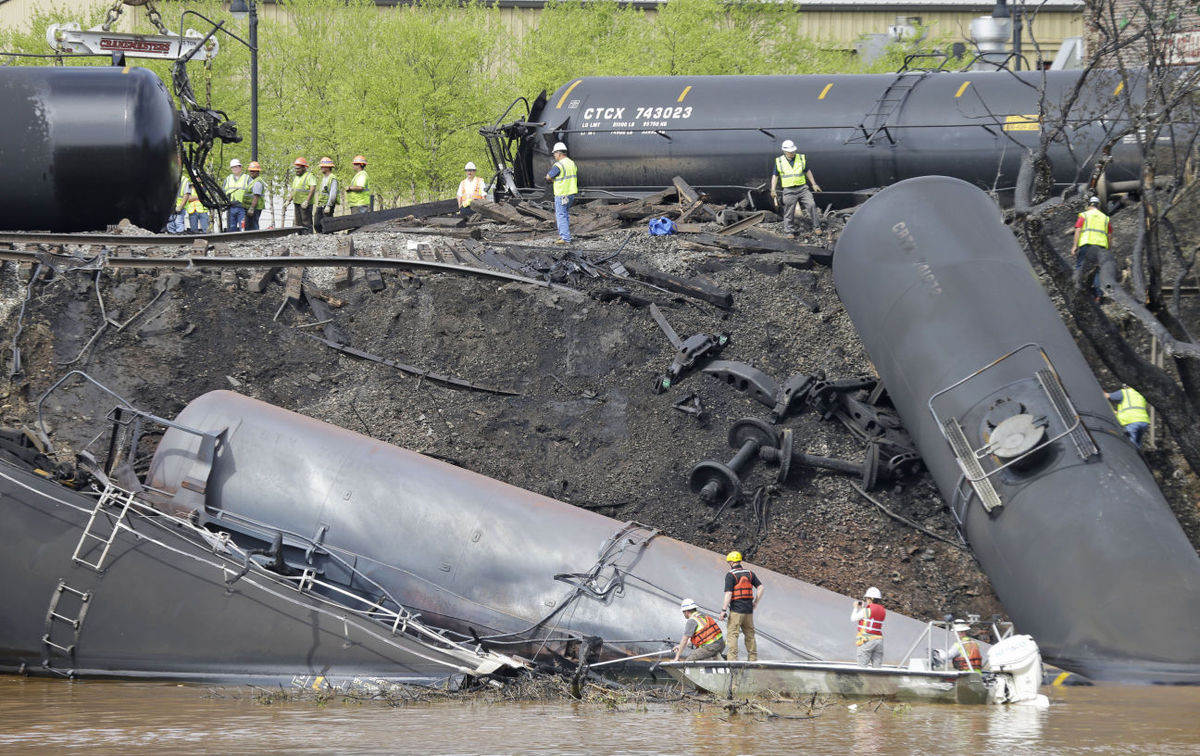 |
| In this May 1, 2014, file photo survey crews in boats look over tanker cars as workers remove damaged tanker cars along the tracks where several CSX tanker cars carrying crude oil derailed and caught fire along the James River near downtown Lynchburg, Va. | Photo: AP Photo/Steve Helber |
New government data obtained by the Associated Press shows that nearly 24,000 safety defects were found when federal inspectors examined rail lines used to transport crude oil around the country. The defects, which included worn rails, broken bolts, and cracked steel bars, were discovered on 58,000 miles of track across 44 states.
What’s more concerning? Federal regulators also reported that railroad operators routinely failed to correct deficiencies after they were identified, according to the Associated Press.
“All of this is a call for continued vigilance,” said Steven Ditmeyer, a former senior official at the Federal Railroad Administration. “One defect or one violation of the right kind can cause a derailment.”
Over the past decade there have been at least 27 oil train accidents in the U.S. and Canada, including a 2013 derailment in Quebec that killed 47 people. In the U.S., defective fasteners were cited in a 2015 derailment in Montana that resulted in a 27,000 gallon crude oil spill. In 2014, unrepaired steel cracks in Virginia caused 15 cars to derail and burst into flames along the banks of the James River.
As former veteran energy regulator Tony Clark recently wrote, “pipelines remain, by far, the safest means by which to transport [our] energy goods.”